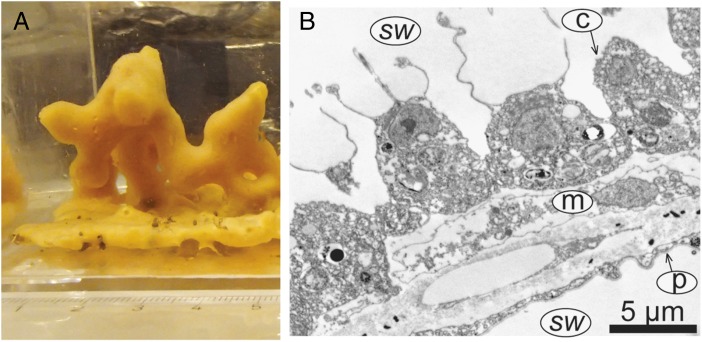Fig. 1.
(A) The marine demosponge Halichondria panicea investigated by Mills et al. (5); note centimeter scale in the foreground. (B) Transmission electron microscopy through the body of the calcareous sponge Sycon coactum. The ability of sponges to tolerate low oxygen is probably related to their basic body design, with only two cell layers, the external pinacoderm (p) and the internal choanoderm (c), separated by a largely inert mesohyl (m). Both cell layers are in direct contact with seawater (sw), and diffusion distances for oxygen to any cell are short. (Scale bar, 5 μm.) Thus, sponges and other small thin animals may have been able to tolerate low Proterozoic oxygen levels; however, larger, metabolically active animals, particularly carnivores, would have been excluded. Images courtesy of D. B. Mills (A) and S. Leys (B).

